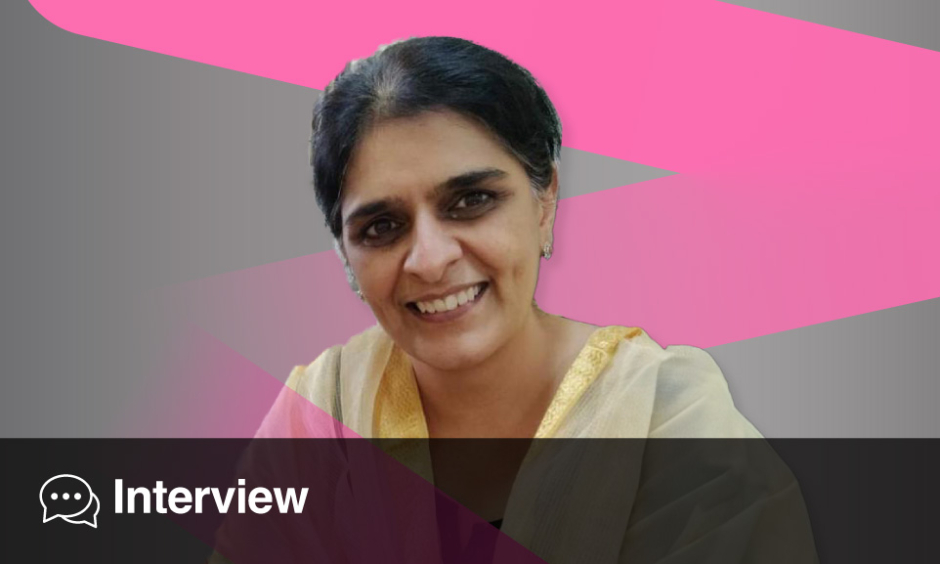Suvarna Alladi | Professor of Neurology, National Institute of Mental Health and Neurosciences, Bangalore, India
Citation: Neurol AMJ. 2024; https://doi.org/10.33590/neurolamj/TWLY3235.
![]()
When did your interest in neurodegenerative diseases begin?
When I was in the third or fourth year of medical school, I realized that I had an aptitude for neurology, both for the science as well as the personal concerns of persons living with neurological disorders. At the same time, I noticed that my friends showed greater aptitude for other medical specialties. For example, I had a friend who could take one look into the eye of a patient and make an accurate diagnosis of a rare ophthalmological disorder, and another friend who was so happy delivering babies in the obstetrics labor ward. But when I saw my first patient with muscular dystrophy, a genetic problem that causes weakening of muscles, I found that I not only empathized with the patient and his family but was also able to pick up clinical signs easily. That was the first step. Later, during my neurology training, I found that I connected well with people living with dementia, I was able to understand the cognitive profiles of patients, make diagnoses, and also get energized when I helped them as much as I could. There are two things that lead you down specific paths in medicine: what you want to do and what you’re good at doing. Neurodegenerative diseases fulfilled both criteria for me, and to this day, after so many years, what I enjoy best is talking to people with dementia, their caregivers, and making a diagnosis with an aim to help.
Your research spans several types of dementia, including frontotemporal dementia and atypical Alzheimer’s disease. What are the key differences in diagnosing and managing these conditions compared to more typical forms of dementia?
When a person becomes forgetful in old age, they recognize that they could be developing Alzheimer’s disease and consult the doctor early, since there is more awareness about Alzheimer’s disease. But patients with frontotemporal dementia have behavioral problems and personality changes that family members do not typically recognize as symptoms of dementia. For example, they could start eating lots of sweets, become socially inappropriate, or have obsessions. These symptoms cause a lot of stress for carers because they don’t understand why their loved one has changed so much. This of course leads to a delayed diagnosis of dementia. In another form of frontotemporal dementia, called semantic dementia, patients have problems with understanding concepts and words. Patients speak fluently, but their words are a bit empty, and they typically have problems with names. When you talk to them, they don’t understand what you’re saying; this disorder is not related to day-to-day memory loss, but reflects an inability to communicate concepts. In another dementia disorder called posterior cortical atrophy, an atypical form of Alzheimer’s disease, patients have problems finding their way around or identifying objects, or they have problems with their visual perception and end up consulting ophthalmologists. These atypical forms of dementia are not well recognized, and they affect different areas of the brain that are quite distinct from typical Alzheimer’s disease. The pathology is also quite different, and so is the treatment. Rehabilitation obviously must be tailored to their specific needs. So, it’s very important to increase awareness about atypical forms of dementia among primary physicians so they can detect dementia early and refer these patients to neurologists for management.
Given the rapidly rising burden of dementia, can you discuss the importance of community support and awareness?
Despite a rising burden, only one in 10 people with dementia in India receive a diagnosis. There is very low awareness about dementia, and very often patients don’t seek a doctor’s help, as they don’t recognize it as a disease and think it’s a part of normal aging. It is therefore really important to sensitize the community and create awareness. So, I co-founded a non-governmental organization (NGO) with a caregiver, and we started intensive awareness activities. We visited Senior Citizens Associations and other groups every month to talk about dementia and brain health-promoting activities. We conducted memory screening camps and advised people with memory problems to visit us in the clinic. It is also important to train primary care doctors to diagnose dementia since even physicians consider early symptoms of dementia a part of normal aging.
How does the Alzheimer’s disease NGO you co-founded address these needs?
The NGO Alzheimer’s and Related Disorders Society of India Hyderabad Deccan chapter was co-founded in 2007, with very committed caregivers. We were inspired by our patients who had dementia. We developed person-centered care plans, caregiver education and counseling sessions, set up a day care center, conducted awareness sessions including memory walks, and engaged with policymakers to improve services and community support for dementia. The carer support groups are particularly active and help each other by sharing innovative solutions they develop to improve the quality of life of their family members with dementia
As a former Commonwealth research fellow in cognitive and behavioral neurology at Cambridge, how has your international experience influenced your research and clinical practices in India, particularly in the field of dementia care?
The Cambridge Memory Clinic, where I was a Commonwealth Fellow, was one of the best clinics. The clinic set very high standards for diagnosis and research. What I learned that was most impactful from Cambridge was how to conduct high-quality research on dementia. I also learned clinical cognitive neurology, making a better diagnosis, developing appropriate cognitive tests, and how to convert one’s clinical observations into research findings. But when I went back to India, it was a completely different scenario, and I needed to learn how to adapt my learnings to another context. I do think it was very important for me to get trained abroad in a great clinical and research center and come back to pass on this knowledge to my colleagues in India.
Can you tell us about the challenges and successes you encountered while establishing one of the first memory clinics in India and how it has evolved since its inception?
I started my work in a general hospital at a time when dementia was only just beginning to be recognized as a problem in India. There were huge challenges to convince our hospital administration that exclusive space, time, and personnel for dementia was required. For example, the orthopedics department clocked 70–100 patients in a day, and I was able to consult not more than 10 patients in a day. It did not make much sense to the administration that patients with dementia required more time for evaluation and that families needed education and counselling. But then I was very lucky, the head of my department, an expert in stroke, completely supported my work. Subspecialities were growing at that time in neurology. Hard times continued and we did not have funds for the multidisciplinary teams. However, we then managed to secure research grants, and all research staff engaged with both clinical care and research. This helped the Memory Clinic grow and it eventually became an integral part of the department. A large number of patients consulted us, and we learned more and more about dementia from patients, caregivers, and dementia research communities across the world. Conferences like the Alzheimer’s Association International Conference (AAIC) helped in improving the quality of research. Overall, this took us about 8–10 years. Today, we have complete support from our institutions, but it remains challenging to set up memory clinics in smaller hospitals.
You are presenting ‘Bilingualism And Dementia: Implications For Brain Health And Policy Development’ as a plenary speaker at his year’s AAIC. Could you summarize the key findings of this research?
Globally, there are 55 million people with dementia speaking 7,000 different languages, so it’s really important to address linguistic diversity in dementia. India is a linguistically very diverse country. We have developed and harmonized a comprehensive neurocognitive toolbox, The Indian Council of Medical Research NCTB, to test appropriate cognition across many Indian languages in a multicentric study across India. So, the first message of my presentation was that every cognitive neurology clinic or research lab needs to use cognitive tests in the different languages that their patients speak, and tests have to be adapted for their cultures, rather than just translated from English. Patients must be evaluated in the language they know the best, by clinicians who also speak these languages. This will ensure we assess cognition properly in our patients. This step is a prerequisite for all clinical care and research, to ensure valid interpretations. The second key message is regarding bilingualism, the ability to speak more than one language fluently. More than half of the world is bilingual, and people tend to use different languages in different contexts. We also need to therefore take bilingualism into account while testing cognition of patients. In India, like in many places across the world, bilingualism was found to be associated with a later onset of dementia. This protective effect varies depending on the sociolinguistic context of language use. Our research also presented the brain mechanisms that underlie the role of bilingualism in resilience against dementia. My third message was about policy in relation to brain health. Research findings need to be applied to policy, to improve brain health in our societies. Policies related to clinical practice, brain research, and education must address linguistic diversity and equity to advance the field forward.
What are some of the most highly anticipated research findings in dementia being presented at this year’s AAIC?
The Lancet Commission will present on risk factors for dementia. This talk will be a very exciting one. It will be interesting to learn about new risk factors so that we can develop policies to reduce the burden of dementia globally. Another area of research that I am looking forward to is in the realm of newer drugs for AD. Since last year, we’ve had two anti-amyloid therapies approved by the FDA. Research is being presented on how patients are doing on medication. The focus at AAIC on diversity and global relevance to Alzheimer’s disease and other related dementia research is also growing and it’s reassuring to listen to the diverse work being done by researchers from many different backgrounds and countries presenting here at the AAIC. These are very exciting times, that can make a huge change for research relevant to global populations.








